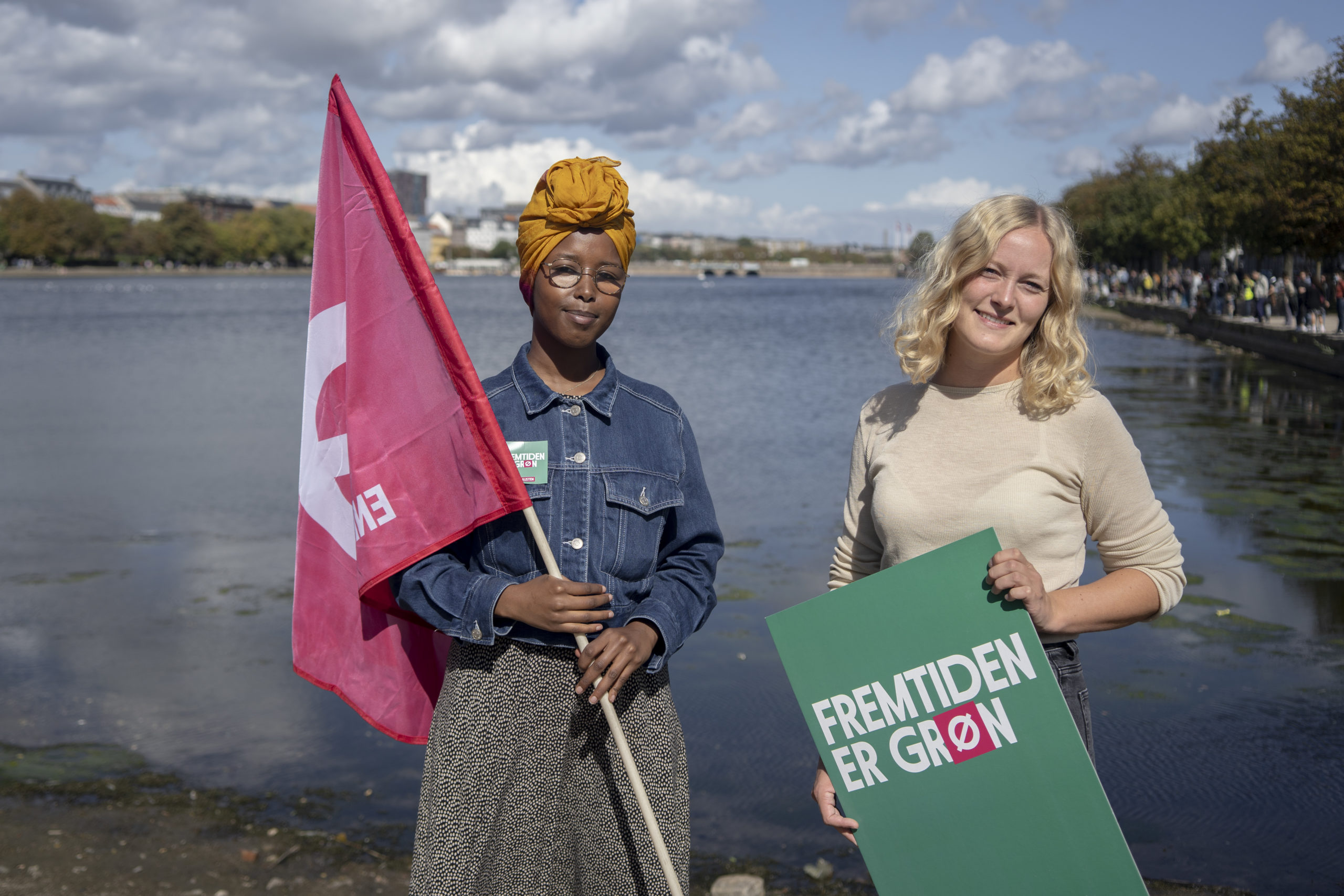The radical left wing political party the Red-Green Alliance won the largest number of votes in the local elections in the Danish capital Copenhagen in November’s local elections to emerge as the largest political party in the city.
Across the country, the Red-Green Alliance, or Enhedslisten (“Unity List”, EL) as it is also known, won 114 council seats, an increase of 12 on its previous results.
The Red-Green Alliance was formed 32 years ago as a new broad left party contesting elections by an alliance of left wing parties, including the Danish section of the Fourth International, SAP. It now has significant representation in the Danish Parliament, where it has 13 out of the 179 seats and is widely regarded as one of the most successful ecosocialist parties in Europe. The Red-Green Alliance is also part of the European Left Party.
Below we publish an interview with Eva Milsted Enoksen of the Copenhagen Red-Green Alliance by Andreas Thomsen of the Rosa Luxemburg Foundation that has been widely published. You can also find coverage of the election here, from the US radical magazine Jacobin.
Scottish local elections take place in May 2022. Sadly, we don’t have a political party in Scotland comparable to the Red-Green Alliance … yet … “unity” appears to be in short supply among the Scottish left, but through its links with the Fourth International, ecosocialist.scot is proud to be associated with the Red-Green Alliance’s success and looks forward to the building of such a party in a future independent Scotland.
Danish municipal elections: Red-Green Alliance strongest party in Copenhagen
Interview with Eva Milsted Enoksen, Copenhagen by Andreas Thomsen
Andreas Thomsen: The red- green Alliance achieved a very good result in Copenhagen with 24.6 per cent and 1st place. Can you briefly describe the political situation? What were the reasons for this success from your point of view?
Eva Milsted Enoksen: The Red-Green Alliance (Enhedslisten, EL) had the best election in our 32-year long history. With 24,6 % of the votes we are now by far the largest party in Copenhagen, the second largest being the Social Democrats (SD) who had a catastrophic election and only got 17,3 %. This is the culmination of a trend of more than 10 years. It is the first time in over 100 years that the Social Democrats are not the largest party in the capital.
There are a few reasons worth mentioning. First, there is the controversy of urban development in Copenhagen, where housing prices are exploding. Social Democrats, together with the right wing, the Social Liberal (RV) and Socialist People’s Party are planning to build an artificial island at the entrance to Copenhagen harbor with housing for 35.000 people. Their argument is the crisis of affordable housing. However, the residential building planned on the island are to a large extent going to be sold on the free real estate marked, meaning very expensive flats that no ordinary worker, let alone student or unemployed person, will be able to afford. The real reason behind the project is that the city is in debt and needs money to pay for a costly metro system. Secondly, there a severe climate and environmental impacts of the project. Many are against the growth logic behind the it; more (expensive) housing calls for more investments in infrastructure (including for cars), which needs to be paid by selling off more building plots to build more (expensive) housing, needing more infrastructure etc. There has also been a huge environmentalist movement organizing against urban development in one of the very few nature areas in Copenhagen.
Also, voters are now more concerned about the climate emergency. Here EL has an advantage over S, being traditionally both red and green and having a very strong support from the young voters. Finally, the Social Democrats did not field a well-known top candidate. The former Lord Mayor from S (Frank Jensen) was forced to leave politics last year after a series of sexual harassment cases and the new Social Democrat candidate is much less known in Copenhagen.
Andreas Thomsen: How does the municipal system work in Copenhagen? Will we see a red-green lord mayor of Copenhagen now?
Being the largest party does not necessarily translate into getting the lord mayor post in Copenhagen. The system is such that you need to form a majority of the 55 seats in the city council in order to become lord mayor. Copenhagen has one lord mayor and six deputy mayors, each with certain administrative autonomy. After elections, parties form loose alliances in order to form majority or minority groups who can then claim (deputy) mayor posts according to their size. A minimum of seven seats is required to name a deputy mayor, and 28 seats is required to name the lord mayor. The majority group gets to choose posts first. After this election, the Social Democrats quickly formed a group with three small far-right parties, the Conservatives, the Liberals and the Social Liberals. This was not a major surprise as all these parties had previously declared that they would not tolerate a lord mayor from the far left. This majority group (32 seats) claimed the lord mayor post for the Social Democrat’s Sophie Hæstorp Andersen and three deputy mayor posts for the largest right-wing parties. Enhedslisten together with the Socialist People’s Party and the Alternative formed a minority group (23 seats) and claimed two deputy mayors for Enhedslisten and one for the Socialist People’s Party.
However, the election leaves EL in a stronger position. The party´s two deputy mayors are in charge of urban development, housing, energy and environment, as well as social affairs. It is yet to be seen if this will mean a substantial change in the development and priorities in Copenhagen such as many voters seem to have wanted. If the Social Democrats will choose to work exclusively with the right wing in the next four years, it will leave EL in a difficult position with a strong election result but difficulties delivering major results. On the other hand, there is no doubt that the Social Democratic power position in Copenhagen is weakened, and EL might succeed in including the decisive Social Liberals in forming alternative majorities on specific issues such as environment or climate mitigation.
Andreas Thomsen: The agendas of progressive urban policy are similar in many larger cities, especially in the area of housing – what do you think can be achieved in the next few years? Do you follow the debates in Berlin on this issue? Is there cooperation?
Eva Milsted Enoksen: Many in Enhedslisten have followed the successful referendum on remunicipalisation of housing in Berlin. That’s a great inspiration. The model we propose as a radical alternative to the current market-based development in Copenhagen is partly inspired by Vienna. We are campaigning for a rent cap. We propose that the municipality shall provide low-interest loans to non-profit housing. And we want to create a municipal fund for housing construction and urban renewal. All in all, we want 75 per cent of new construction to be affordable housing.
Andreas Thomsen: You are explicitly a red AND green party, an organisation that is committed to ecological transformation as well as socialist class politics. doesn’t that create contradictions? How do you deal with them?
Eva Milsted Enoksen: Actually, I don’t’ think there is a contradiction. The green transition is acutely necessary, and it is at the same time a unique opportunity to change the capitalist logics and the growth ideology defining most societies today.
Most parties in Denmark are painting themselves green. But solutions are quite different. While the right wing has just recently accepted that there is in fact a genuine crisis which is man-made, Social Democrats have long been vocal about the need to act. However, it has not been a priority in their politics, neither in Copenhagen nor in the national parliament. To a large extent, their strategy is the same as the right wing; we should invest in better technology and that way we don’t need to change our society or the way we live and consume. This is also seen as a good business case for Denmark which is already strong in green export technologies such as windmills, waste-to-energy etc.
EL is not against having a focus on new technologies but is also saying out loud, that we need to fundamentally change the way we have organized our societies. In the city we don’t need more parking spaces for private cars, we need more space for cyclists and pedestrians and better and cheaper busses and trains. Off course, not all workers who depend on a car for their daily commute agree with us on this point but here we choose the green focus over the (traditionally) red one.
In general, our green policies aim to benefit ordinary people not elites. The wealthiest countries, multinational enterprises and the extremely rich are also the ones with the largest carbon footprints. We need to make sure that they are also the ones paying the largest part of the bill for the transition.
_________________________________________
Eva Milsted Enoksen is a long time member of Red Green Alliance living in Copenhagen, Candidate for national parliament and former member of the Copenhagen party leadership.
Andreas Thomsen is the former Head of Office of the Rosa-Luxemburg-Stiftung in Brussels and is now the deputy head of the Rosa Luxemburg Foundation’s national work in Berlin.
Reprinted from https://www.rosalux.eu/en/article/2049.danish-municipal-elections-red-green-alliance-strongest-party-in-copenhagen.html




